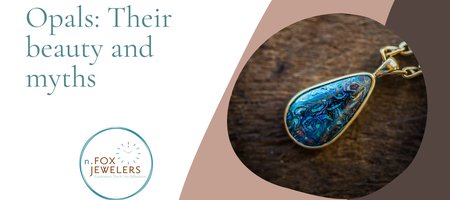What is an Opal?
The price of opal per carat is determined by a combination of factors:/p>
- Brightness - brightest is best
- Pattern - some patterns, like Chinese Writing or Harlequin, are rarer than others, like Pinfire
- Body tone - the body tone is the darkness of the opal if you ignore its color; other factors being equal, the darker the body tone, the more rare and therefore more valuable the opal
- Consistency - an opal that looks bright and beautiful from all directions is valued more highly than one that looks fantastic when held in one position, but dull in another position
Opals come with plenty of myths.
- It is said that if you are not born in October, you should not wear an opal. It brings good luck to October babies, but bad luck to others.
- Another myth is that an opal should never be given or accepted as a gift.
- Another myth: an opal should never be in an engagement ring, as it will make the new bride an early widow.
At one time in ancient history, Opals were considered the luckiest of gemstones. The Greeks believed opals gave them the power of foresight. Even today, Opals are believed to have healing properties and are lucky for business.
How did the bad luck myths start for Opals?
In 1829 a novel “Anne of Geierstein” was written, where the lead character died when a drop of holy water fell on her opal necklace and drained it of color. Diamond traders and manufacturers also had a hand in spreading bad luck rumors about opals out of fear their popularity would supersede diamonds.
Thankfully none of these myths are true and, as seen by its increasing popularity, jewelry lovers are not taken in by those old wives' tales.
Our own Grant Dorangrichia created a custom Opal pendant necklace with a rare Fire Opal. The colors are breathtaking.

